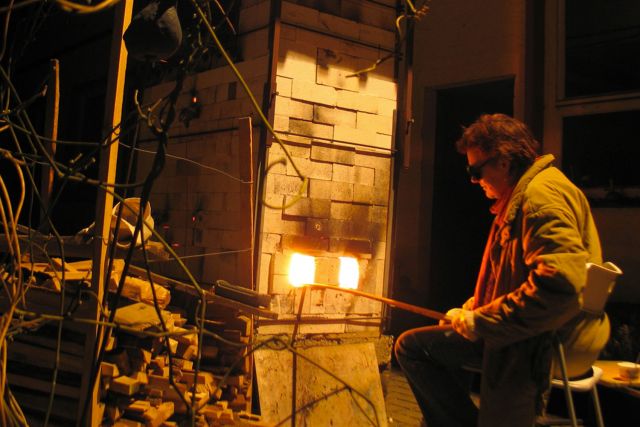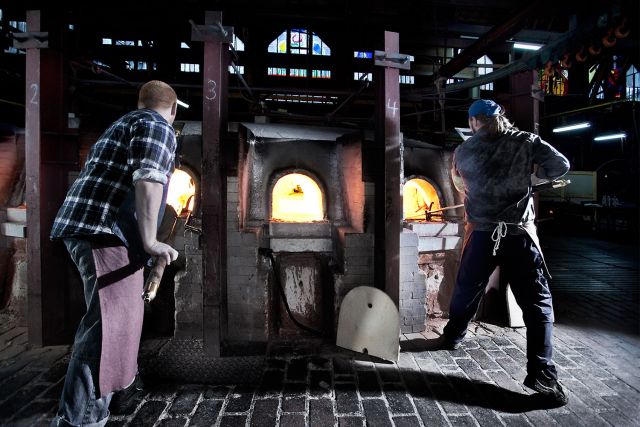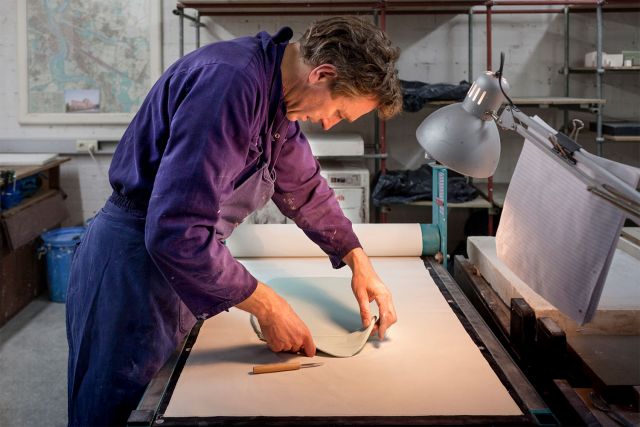There is no opening in this big cube. It consists of six identical parts. The veneer with dark and light woods results in a geometric pattern with high contrast. As soon as the inlay is put on, the parts are glued together and assembled. The lightly convex shape gives each side volume.
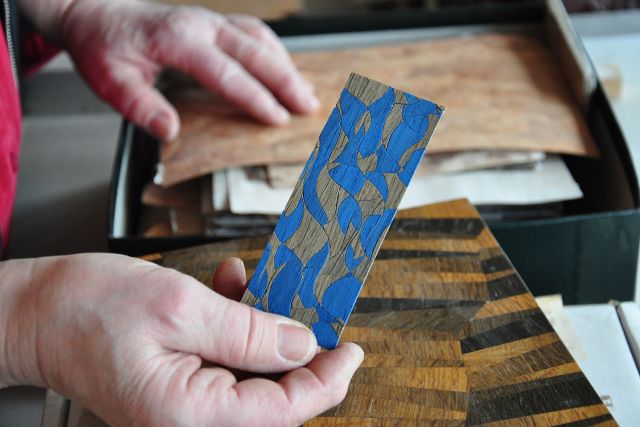
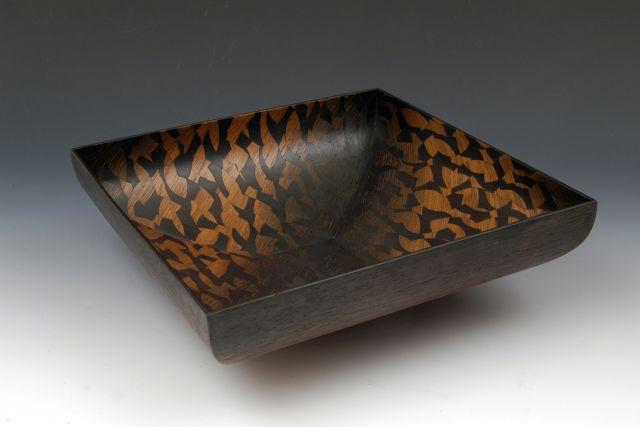
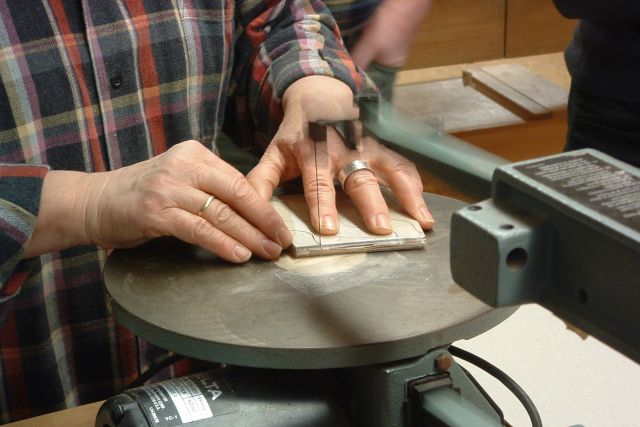
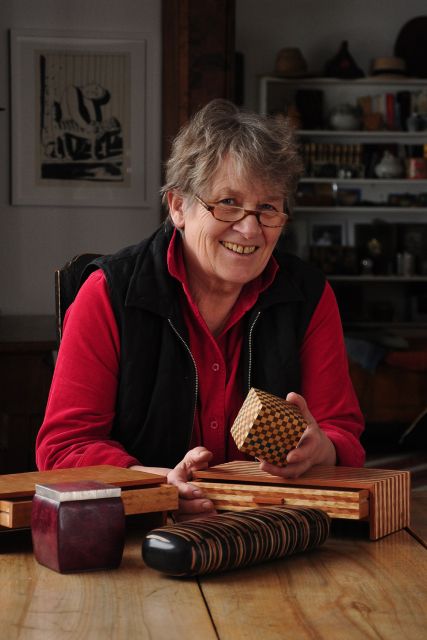
Ulrike Scriba
- Wood marquetry maker
- Gengenbach, Germany
- Master Artisan
- Recommended by Zentralverband des Deutschen Handwerks
By appointment only
+49 78033937
The timeless art of marquetry
- • Ulrike has an extensive collection of veneers
- • Her designs strive for freshness, clarity, simplicity and elegance
- • Restoration work led her to marquetry art
Ulrike Scriba was born in 1944. Her mother and grandfather were interior designers, and her father operated a handicraft metal design business after the war. Upon leaving school at the age of 14, Ulrike worked in her father's business before attending the Werkkunstschule in Darmstadt to study sculpture. She gave up her studies after a few years to take part in the reconstruction of the Würzburg residence. "It was always difficult for me to learn theoretical concepts, but I enjoy learning things practically," she explains. As a result of numerous restoration projects, she became interested in the art of marquetry. Ulrike has since dedicated herself to the old craft of intarsia as a design element for more than 30 years. Her primary concern is giving this art a new impetus. Her creations skillfully incorporate wood's different textures and colours in sophisticated objects. Her boxes, caskets and trays can be found in museums and galleries worldwide.
Read the full interviewWorks
Photo: ©All rights reserved

Photo: ©All rights reserved
In contrast to earlier bowls made by Ulrike Scriba, this teardrop shaped piece has softer, round shapes. It is worked very thinly from a heavy block of veneers made of local bog oak with a light black-brown colour gradient, and maple dyed blue. These blue pieces were glued to the surface. Adding veneers to the concave and convex surface poses a technical challenge as they are not very flexible.

Photo: ©All rights reserved
This small chest with a single drawer is intended for the storage of jewellery. It is square in shape. Different tones of wood are kept in light shades to create a harmonious small-scale design.

Photo: ©All rights reserved
In contrast to earlier bowls made by Ulrike Scriba, this triangular work has softer, round shapes. It is worked very thinly from a heavy block. Different bog oak veneers of predominantly black-brown colour are applied geometrically in a high-contrast pattern. Adding veneers to the concave and convex surface poses a technical challenge as they were not very flexible.

Photo: ©All rights reserved
This small silver lidded box has a soft squarish base and a flat squared silver lid. The jigsaw pattern of the veneers was achieved by sawing to produce a dynamic pattern with high contrast between the brown walnut and nearly black ebony. A veneer of ray skin and horn covers the lid, with the same pattern.





